| |
| |
Photographer,
Location |
Images |
Comments |
|
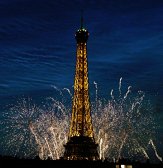
|
Sylvain
Raimbault,
Paris, France
Jul. 14, 2009 |
#1,
#2,
#3,
#4,
more |
What a national day !!
Tonight, July 14, 2009, it was the national day of France (celebrating the french revolution in 1789).
A huge fireworks was scheduled on the Eiffel tower in Paris, for the 120 years of the "iron lady", as we call it.
The God of sky was with us : it was also a wonderful display of noctilucents clouds, the first of my life, as far as I remember.
WOW ! What a show !!!
|
|
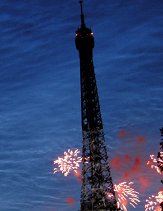
|
Olivier Lagrave,
Paris, France
Jul. 14, 2009 |
#1,
#2,
#3,
#4 |
As we celebrated the storming of the Bastille on July 14th, NLC stormed the sky of Paris !
Photos taken from the Champ de Mars during Bastille Day's celebrations. The display was so breathtaking (my first actually) that as I almost forgot to watch the fireworks !
|
|
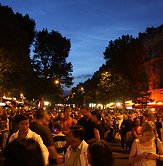
|
Jean-Marc
Lecleire,
Paris, France
Jul. 14, 2009 |
#1,
#2,
#3,
#4,
more |
This evening, july 14th, was the Bastille day in France. I went to Paris to take pictures of the Eiffel Tower fireworks.
There was not only Eiffel Tower but many noctilucent clouds, very bright, visible from horizon to zenith ! I made some pictures from Alma Square (place de l'Alma) in Paris, with a Canon 40D digital camera.
|
|
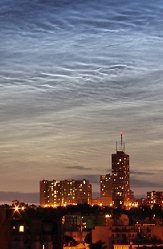
|
Louis Hecker,
Vincennes, Val de Marne, France
Jul. 14, 2009 |
#1,
#2 |
Awesome noctilucents clouds in the parisian sky. They took almost half of the sky at the beginnig !
Taken with Pentax K200D, f8 200 iso and from 5 to 10s exposure
|
|
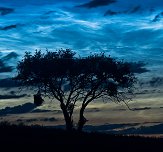
|
Marek Nikodem,
Szubin, Poland
Jul. 14, 2009 |
#1,
#2, #3,
#4, more |
Yet another fabulous display of NLCs just after sunset here in Poland. Last night, after sunset. Nikon D 700/ Nikkor 28-105
|
|

|
Erwan Gardan,
Paris, France
Jul. 14, 2009 |
#1,
#2 |
I got this picture while I'm was looking at the firework over Paris for the national day (July the 14). What a beautifull 120th birthday for the Eiffel Tower.
|
|
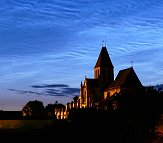
|
Greg,
Triel sur seine, Yvelines, France
Jul. 14, 2009
|
#1,
#2, #3,
#4, more |
These looked
a lot like noctilucent clouds--am I right? (Editor:
Yes.) |
more
images: from
Peter McCabe of Dublin Airport, Ireland; from
Morten Ross of Sandbukta, Svartskog, Norway; from
Robert B Slobins of Prague, Czech Republic; from
Donatas Tamonis of Kaunas, Lithuania; from
Magnus Olsson of Helsingborg, Sweden; from
Emmanuel Jehin of Spa, Belgium; from
John Grzinich of Ahja, Estonia; from
Jacob Kuiper of Steenwijk, The Netherlands; from
P-M Hedén of Vallentuna, Sweden; from
Jeremy Housman of Ramsgate Kent UK; from
Jan Koeman of Kloetinge, The Netherlands; from
Peter Elzinga of Burgum, Friesland, The Netherlands
|
|








